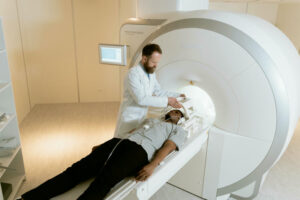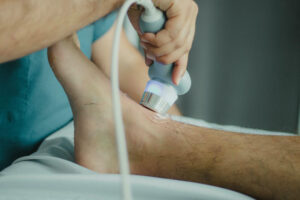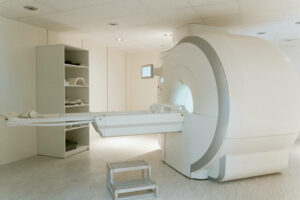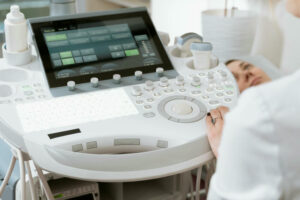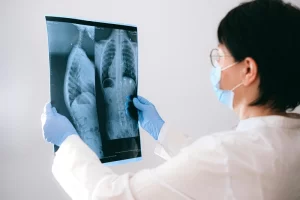What is a stroke?
Learn about how a stroke develops, the rehabilitation possibilities, and the role of both traditional and robotic therapies.
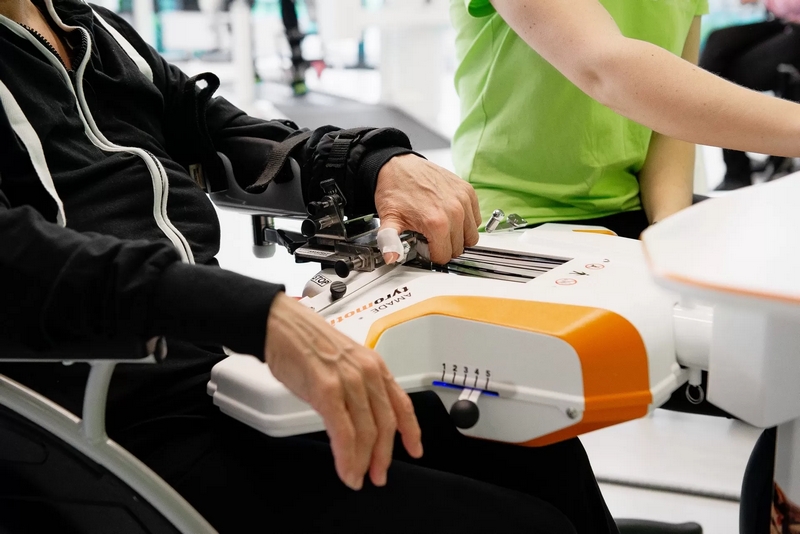
A stroke – or cerebrovascular accident – occurs when the blood vessels supplying a certain area of the brain become damaged, leading to interrupted blood flow or bleeding. In Hungary, it affects more than 40,000 people every year, posing a serious risk due to the loss of oxygen and nutrients to the brain cells. As a result, the abilities controlled by the affected brain area (such as memory, muscle control) may be impaired, causing movement, speech, cognitive, and sensory disturbances. When a stroke occurs in the left hemisphere, the right side of the body is affected; with a right-hemisphere stroke, the left side is affected. The time window (the first 4.5 hours) is critical: professional care must be provided as soon as possible within this period.
Possible difficulties after a stroke
After a stroke, problems may arise in numerous areas. Weakness of the limbs, difficulty executing movements, as well as balance and coordination issues are common. Sensory disturbances—such as numbness, tingling, and reduced pain sensation—may also occur. In addition to vision and hearing, cognitive functions like concentration and memory can be affected. Aphasia (speech comprehension and expression disorders), fatigue (abnormal tiredness), and various mood and behavioral changes (such as depression and anxiety) frequently appear.
Consequences of a stroke
The consequences of a stroke may include speech and language disorders (aphasia, dysarthria), which affect already acquired speech. Attention and memory disturbances are also common, especially if the injury involves extensive brain areas. Due to the difficulties in processing the trauma and the sudden change in life circumstances, post-stroke depression is very common. In terms of musculoskeletal functions, coordination problems, unsteady or clumsy movements, and spastic muscle tone (spasticity) may occur, significantly reducing quality of life.
Stroke rehabilitation
Rehabilitation opportunities after a stroke begin during the hospital’s acute care phase, and early intervention is of paramount importance. The most intensive improvement occurs in the first three months, and spontaneous recovery can also happen in this period. The goal of rehabilitation is to achieve the highest possible level of recovery of lost functions: relearning movement, speech, cognitive abilities, and self-care. Even after six months, significant progress can be made, as intensive therapy enables many patients to regain independent walking and perform essential daily activities.
Robotic rehabilitation
Innovative robotic devices represent a significant step forward in stroke rehabilitation. High-repetition, precise movement training enables the formation of new connections in the nervous system, accelerating the relearning of lost functions. These high-tech machines (such as robots designed to improve upper limb, hand, and gait function) provide accurate measurements and objective feedback, allowing progress and results to be continuously tracked. The combined use of robotic and traditional therapies is most effective in achieving rapid and lasting improvement.
Traditional therapies and complementary treatments
Traditional physiotherapy and exercise therapy form the foundation of post-stroke recovery, aiming to provide appropriate movement stimuli, potentially several times a day. Functional electrical stimulation (FES) helps activate weakened or paralyzed muscles, while Redcord and other supplementary devices (Bioness L300 and H200) support improvements in walking and hand functions. Speech therapy helps in relearning or improving speech, reading, and writing, while neuropsychological and psychological counseling assist in addressing attention, memory, and mood problems. The essence of the complex approach is that the team of professionals pays attention to all affected areas—both physical and mental.
Home accessibility adaptations
Adapting the home environment is extremely important to make partial or complete self-care safer and easier. It is advisable to remove thresholds and loose rugs, install grab bars in the bathroom, and create non-slip surfaces. Appropriately wide door frames ensure unobstructed wheelchair movement, while a shower chair or a low-step shower can facilitate bathing. The goal is for the living space to be safe and easy to use for both the patient and the caregiver.
The STEPS Budapest rehabilitation center
STEPS Budapest provides an effective rehabilitation program for all ages by combining robotic devices and traditional physiotherapy. The therapy package is put together by the center’s physician and head physiotherapist based on the patient’s goals, condition, and progress. The robotic equipment allows for intensive and precise practice of specific movement patterns, while the expert team (physiotherapists, conductors, speech therapists, psychologists) continuously monitors the patient’s condition and motivation. Our goal is for everyone to regain independence and live a fuller life as quickly as possible.
A complete, detailed version of the above summary is also available for download in PDF format. The PDF contains all the essential information about stroke rehabilitation, detailed therapy options, and supplementary information in one place. Click the link below to download the document and review the most important information at any time:
Download the Full Stroke Rehabilitation PDF
